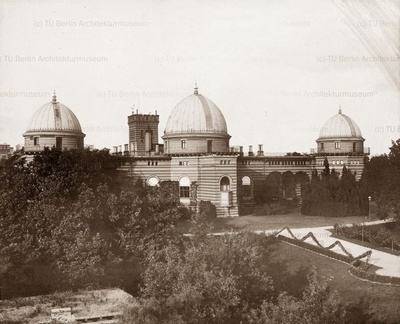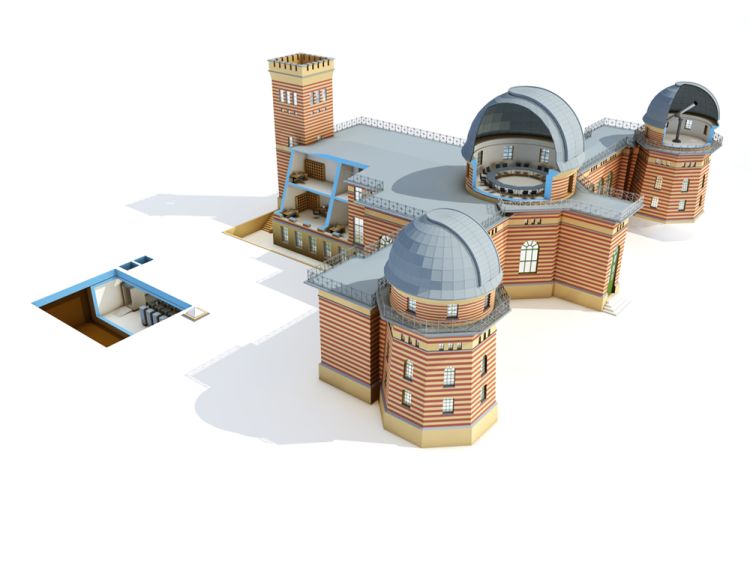The main building of PIK was put into service as the head office of the Royal Observatory for Astrophysics in 1879.

In 1874, the astronomer Hans Carl Vogel was engaged to plan the instrumental equipment of the Observatory for Astrophysics, and in 1875, the architect Paul Emanuel Spieker was assigned to design and head the construction of the observatory.
The building consists of two main wings. The north wing lies with its long axis on a meridian level. The south wing accommodated the three observation towers with their pivoted cupolas and the telescopes.
In the basement, Albert A. Michelson (Nobel Prize, 1907) in 1881 carried out his measurements on the relative movement of the earth against the hypothetical ether, the results of which laid the basis for Einstein’s theory of relativity.
Further information on Michelson’s experiment (PIK, AIP)
The compilation of a photographic stellar atlas in the neighbouring small cupola, as well as the activities of Karl Schwarzschild rank among the outstanding scientific achievements. By 1916, Karl Schwarzschild had found a first approach to the solution of the red shift of light in the gravity field of the sun as demanded by Einstein’s theory of relativity.
As early as 1889, the scientists on Telegraphenberg hill succeeded in recording a remote earthquake near Japan. Actually, the influence of gravitation on pendular movements should have been determined in the Michelson basement of the Observatory for Astrophysics but this experiment was disturbed by interference caused by the earthquake. Hence, measuring methods and interpretation of earthquake waves were further developed, and seismology was constituted as a geophysical discipline to explore the inner Earth.
After a substantial reconstruction of the building, PIK moved to the Michelson House in autumn 2001. During the reconstruction works, a subsurface annex which now contains the institute's high-performance computer was constructed under the northwest part of the building. The east tower still houses a telescope. The middle cupola is today used as a seminar and conference room.






